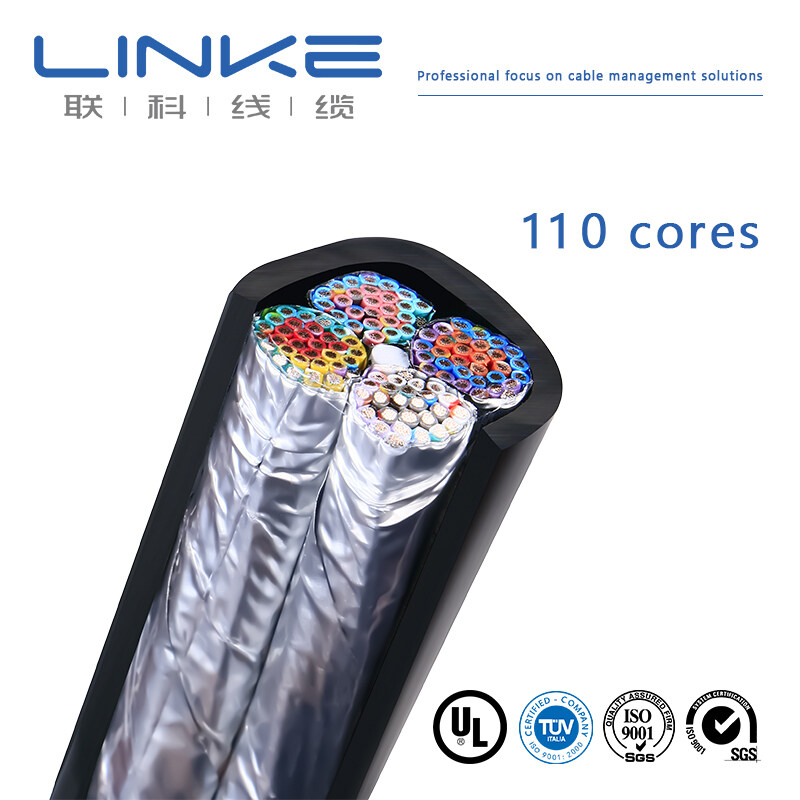Email format error
Email cannot be empty
Email already exists
6-20 characters(letters plus numbers only)
The password is inconsistent
Email format error
Email cannot be empty
Email does not exist
6-20 characters(letters plus numbers only)
The password is inconsistent

News at Linke
News from National Cable And Wire Manufacturing Company.
Common Problems and Solutions for OEM EEG Cable
EEG (electroencephalogram) cables are an essential component in the fields of neuroscience and medical research. These cables are responsible for transmitting electrical signals from the electrodes placed on the scalp to the EEG machine for analysis. As an OEM (original equipment manufacturer) of EEG cables, there are several common problems that may arise during the manufacturing process. In this blog post, we will discuss these issues and provide possible solutions.

Poor Signal Quality
One of the most common problems with EEG cables is poor signal quality. This can result in inaccurate readings and unreliable data. To address this issue, it is important to ensure that the cables are properly shielded to minimise interference from external sources. Additionally, using high-quality connectors and cables with low resistance can help improve signal quality.
Cable Breakage
Another common problem is cable breakage, which can occur due to repeated bending or pulling of the cables. To prevent this, it is crucial to use flexible and durable materials for cable construction. Reinforcing critical areas such as the connector ends and strain relief points can also help increase the lifespan of the cables.
Electrode Disconnection
Frequent electrode disconnections can disrupt the EEG recording process and lead to data loss. This problem can be mitigated by using secure and reliable electrode connectors. Additionally, regularly inspecting and maintaining the cables can help identify any loose connections or damaged electrodes.
Compatibility Issues
EEG cables need to be compatible with a wide range of EEG machines and systems. Incompatibility can result in incorrect readings or the inability to connect the cables to the machine. To address this issue, it is important to thoroughly understand the specifications and requirements of different EEG systems and ensure that the cables are designed accordingly.
Noise Interference
External noise interference can significantly affect the accuracy of EEG recordings. To minimise noise, it is important to use high-quality shielding materials and proper grounding techniques during cable manufacturing. Additionally, incorporating noise filters or amplifiers into the cable design can help reduce interference.
Size and Weight
The size and weight of EEG cables can impact their comfort and usability for patients. Bulky or heavy cables can cause discomfort and restrict movement during EEG recordings. To address this issue, it is important to design cables that are lightweight and have a slim profile. Using flexible materials and minimising the number of connectors can help achieve this.
Cleaning and Maintenance
EEG cables need to be regularly cleaned and maintained to ensure optimal performance and longevity. However, improper cleaning methods or harsh cleaning agents can damage the cables. Providing clear instructions on how to clean and maintain the cables, along with recommending suitable cleaning agents, can help prevent damage and prolong the lifespan of the cables.
In conclusion, as an OEM of EEG cables, it is important to be aware of the common problems that may arise and have effective solutions in place. By addressing issues such as poor signal quality, cable breakage, electrode disconnection, compatibility issues, noise interference, size and weight, and cleaning and maintenance, manufacturers can ensure the production of high-quality EEG cables that meet the needs of researchers and healthcare professionals in the field of neuroscience.

